[Kobe City] “Takenaka Carpentry Tools Museum” recommended for those who like shrines, temples, castles, tea rooms, and wooden architecture
![[Kobe City] “Takenaka Carpentry Tools Museum” recommended for those who like shrines, temples, castles, tea rooms, and wooden architecture](https://resources.matcha-jp.com/resize/720x2000/2023/10/18-149423.webp)
There are many interesting exhibits, such as buildings created with excellent tools, the history of their development, and the techniques used to use them. This museum is a must-see not only for those involved in architecture, but also for fans of shrines, temples, castles, tea ceremony, and swords.
-
Table of Contents
- What is the Takenaka Carpentry Tools Museum?
- The main building is a modern Japanese-style building.
- Exhibition facility divided into seven sections
- Museum shops and experience events are also recommended
- Get a discounted bus ticket! How to get to the Takenaka Carpentry Tools Museum
- basic information
What is the Takenaka Carpentry Tools Museum?
There are museums that you can visit, see, and be amazed by, and the Takenaka Carpentry Tools Museum is one of them.
The Takenaka Carpentry Tools Museum first opened in 1984. The construction industry was undergoing a period of great change during the postwar period of rapid economic growth, with wooden buildings being replaced by reinforced concrete, and homes transforming into prefabricated houses and condominiums.
Carpentry tools, which have supported Japan's uniquely advanced wooden architecture, are used until they wear out, especially the better the quality, and the newer ones are mechanized and electrified, and are on the verge of disappearing.
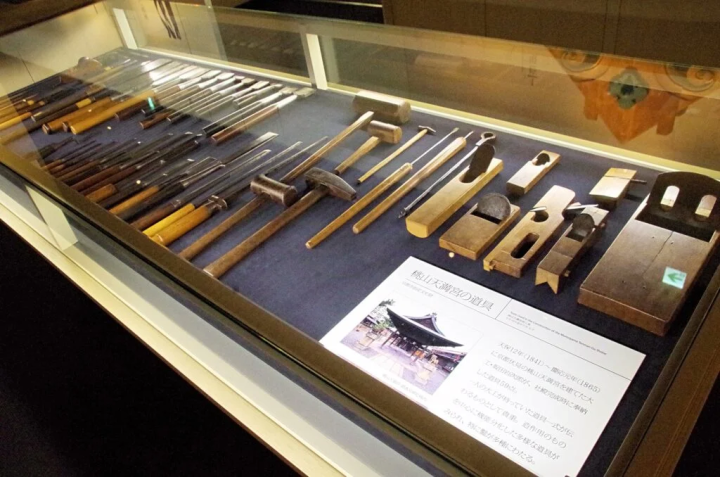
The Takenaka Carpentry Tools Museum was opened with the aim of collecting these ancient and excellent tools as national heritage, and passing on the spirit of artisans and the heart of toolsmithing to future generations through research and exhibitions. It was built by Takenaka Corporation, one of Japan's leading general contractors (currently run by the Takenaka Carpentry Tools Museum, a public interest incorporated foundation).
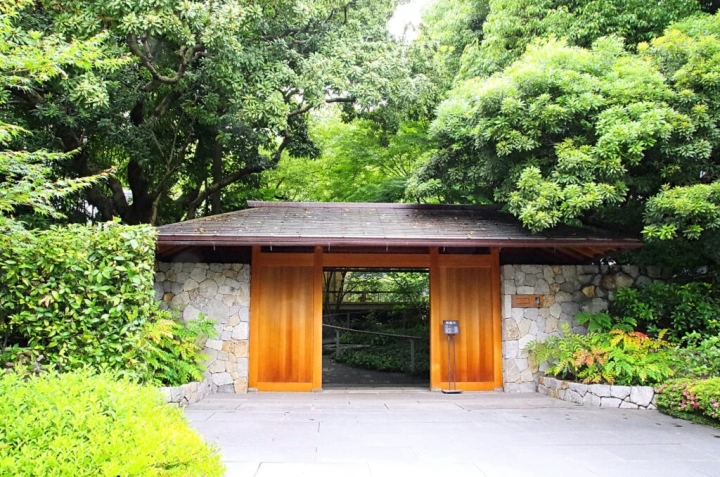
Takenaka Corporation was founded in 1610 (Keicho 15). It is said that the company began when a former retainer of Oda Nobunaga was involved in the construction of shrines and temples in Nagoya. In the Meiji period, the company began to focus on modern architecture and moved to Kobe, where it established its headquarters. The headquarters was later moved to Osaka, but at that time the headquarters and the president's residence were located where the Takenaka Carpentry Tools Museum is now located.
When it first opened, it was located in Chuo Ward, Kobe (near Sorakuen Garden), but as it marked its 30th anniversary and the facilities had become too cramped, it reopened in a new location in 2014 (Heisei 26), retaining only some of the buildings (the main gate, the lounge (renovated), and the teahouse).
![[Kobe City] “Takenaka Carpentry Tools Museum” recommended for those who like shrines, temples, castles, tea rooms, and wooden architecture](https://resources.matcha-jp.com/resize/720x2000/2023/10/18-149426.webp)
The building has one floor above ground and two below, so from the outside it looks like nothing more than a mansion surrounded by walls and greenery. A small information board serves as a landmark.
The main building is a modern Japanese-style building.
![[Kobe City] “Takenaka Carpentry Tools Museum” recommended for those who like shrines, temples, castles, tea rooms, and wooden architecture](https://resources.matcha-jp.com/resize/720x2000/2023/10/18-149427.webp)
Pass through the magnificent gate of the former mansion and through the garden to the main building. The automatic doors are made of wood. If you look closely at the surface of the wood, you will see that it has a "naguri" finish, which leaves marks from cutting with an adze (a tool used to cut wood from before planes were invented). Inside, the reception counter is made of wood, and the walls are white plaster rather than wallpaper. The ceiling of the lobby is also made of wood, and you can get a panoramic view of the garden through the large glass windows.
The Japanese beauty of wood alone is enough to satisfy you, but the Takenaka Carpentry Tools Museum is a waste to visit just for that. If you are interested in architecture, you will find yourself wondering "Where are the pillars?" and "How does the air conditioning work?" There is a lot to see in the building itself, which was built using modern architectural techniques.
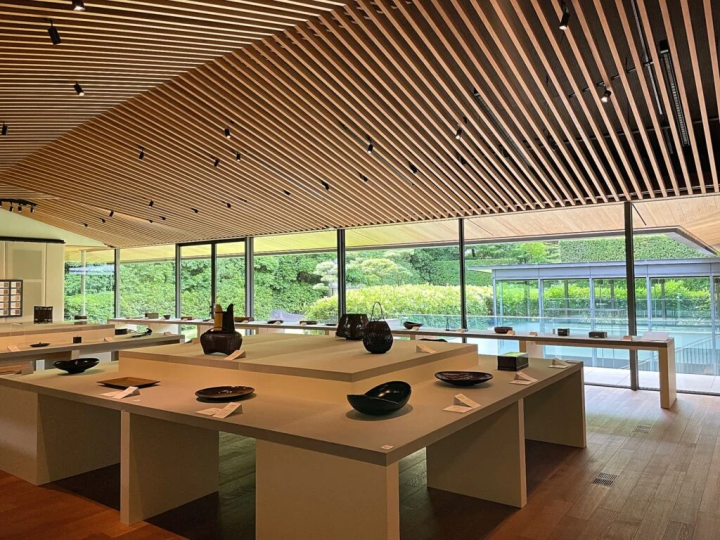
The lobby is sometimes used for special exhibitions and other events, but is usually used as a place for visitors to relax and look out over the outside, with chairs made by woodworkers available for use. It is also an interesting space for anyone with an interest in wooden furniture.
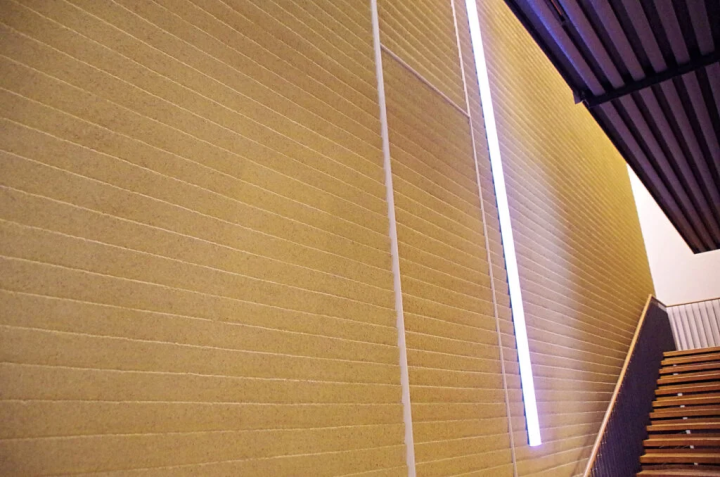
Don't miss the large earthen wall that runs from the first floor to the second basement floor in the staircase area. It has been carved out with a trowel. Since the wall must be finished when it is half-dry, a wall of this size requires many craftsmen to work together at the same time. Despite the involvement of many hands, the seamless, uniform finish shows the high level of the craftsmen (plasterers).
Although a lot of technology has been poured into this building, there are no explanations for it. The subtle details reveal the skill of the designers and craftsmen.
Exhibition facility divided into seven sections
There are seven exhibits, but you can enjoy them no matter where you look. There are few explanatory panels, but there is a system where you can listen to explanations by reading a two-dimensional code with your smartphone, and there is also a touch-screen information display terminal, so you can enjoy detailed explanations in the form of videos and games. (Many explanations are available in four languages: Japanese, English, Chinese, and Korean.)
![[Kobe City] “Takenaka Carpentry Tools Museum” recommended for those who like shrines, temples, castles, tea rooms, and wooden architecture](https://resources.matcha-jp.com/resize/720x2000/2023/10/18-149430.webp)
The most eye-catching spot is the main exhibit, which expresses what the Takenaka Carpentry Tools Museum wants to communicate.
This is a full-scale replica of the pillars and roof of the Kondo (national treasure) of Toshodaiji Temple in Nara. It is about 7m tall. On-site, you can only view it from below, but here you can get up close and see it from the side and diagonally behind.
![[Kobe City] “Takenaka Carpentry Tools Museum” recommended for those who like shrines, temples, castles, tea rooms, and wooden architecture](https://resources.matcha-jp.com/resize/720x2000/2023/10/18-149431.webp)
It is so complex that it is hard to tell how it is put together, with almost no nails used (though nails are used to support the roof section).
This was built about 1,300 years ago. In sections such as "A Journey Through History," "Learning from the Master Carpenter," and "Tools and Handiwork," visitors can learn how it was built in an era when tools and equipment were not as advanced as they are today, and what the master carpenter thought and how he carried out his work.

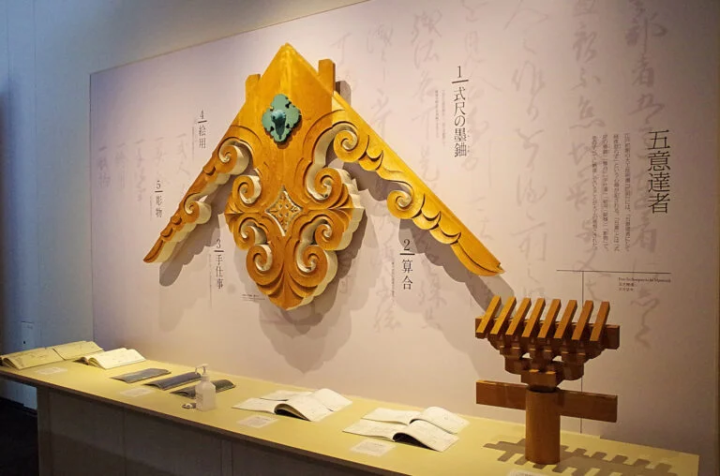
There are several exhibits that allow you to feel the weight of the words left behind by our predecessors.
You can also see the differences in tools used throughout the ages, so I would especially recommend this to people who are interested in shrines, temples, and castle architecture. It will definitely broaden and deepen your appreciation of historical sites.
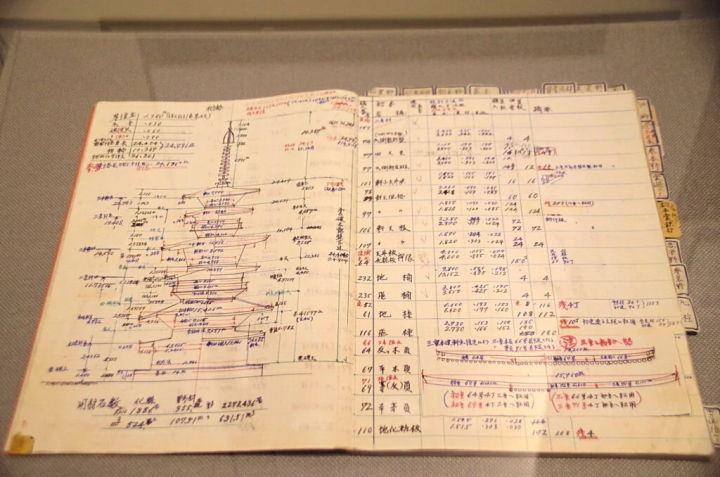

The "Brilliance of Master Craftsmen" section displays the works of master craftsmen who have created tools.
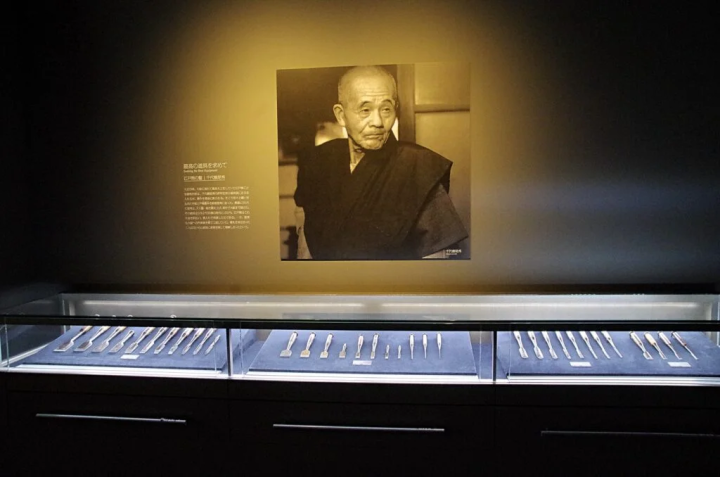
Among them, Chiyotsuru Korehide, who was renowned as the pinnacle of toolsmithing, was born in the Meiji era and passed away in 1957. He is said to be a master craftsman who has never been surpassed. He began to name his handmade carpentry tools, as each one is special. The spirit of this unparalleled blacksmith can be seen in his works that will surely interest sword fans. The story of his relationship with the carpenter Edo Kuma is deeply moving and touching.
![[Kobe City] “Takenaka Carpentry Tools Museum” recommended for those who like shrines, temples, castles, tea rooms, and wooden architecture](https://resources.matcha-jp.com/resize/720x2000/2023/10/18-149437.webp)
Some people may think that Miki is the place to go for saws and metalwork. Of course, the works of Miki craftsmen are also on display.
![[Kobe City] “Takenaka Carpentry Tools Museum” recommended for those who like shrines, temples, castles, tea rooms, and wooden architecture](https://resources.matcha-jp.com/resize/720x2000/2023/10/18-149438.webp)
If you are interested in teahouses, we recommend the skeleton model of the teahouse in the "Traditional Beauty of Japan" section. This is a replica of the teahouse "Saan" (an important cultural property) at Daitokuji Gyokurin-in in Kyoto, made up only of pillars, beams, and bamboo trusses. Come see the skill of the sukiya carpenters, which cannot be seen even in the real thing.
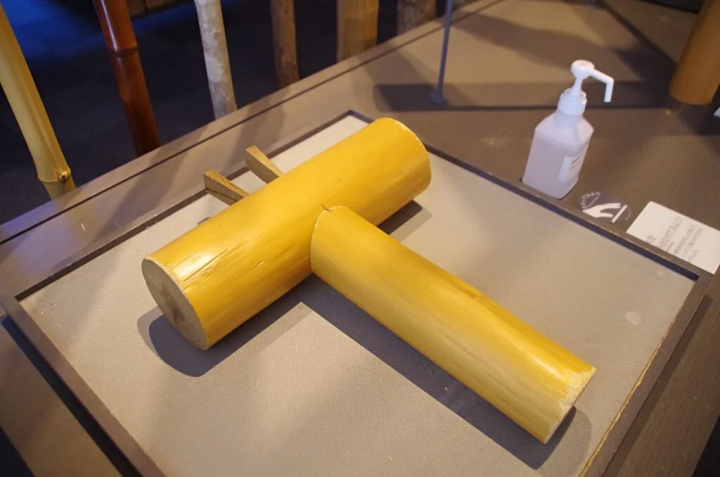
By the way, there are three teahouses in the courtyard on the premises, which are open to the public only in spring and autumn. The three-tatami room, named "Itteki-an," is a copy of the "Minoan" teahouse at the famous Daitokuji Gyokurin-in temple, which is also the skeleton model of the teahouse inside the building, and the seven-tatami hall is a precious copy of the seven-tatami room preferred by Sottakusai, head of the Omotesenke school.

In the "Around the World" section, there is an exhibit comparing Chinese and European carpentry tools, and in the "Making the Most of Wood" section, traditional wisdom on making the most of the blessings of the forest is introduced. There is also an exhibit where you can experience the scent of wood.
The typical visit time is one to two hours, but if you're even slightly interested, two hours won't be enough.
For that reason, you can enter the Takenaka Carpentry Tools Museum as many times as you like on the day. You can go out for lunch. However, it's a shame that there aren't many restaurants in the area. You can eat and drink in the break room, so it's a good idea to bring your own lunch. There are vending machines and coffee machines.


Museum shops and experience events are also recommended

On your way out, be sure to stop by the museum shop (behind the reception counter).
Original products include tote bags, tenugui towels, and postcards.
![[Kobe City] “Takenaka Carpentry Tools Museum” recommended for those who like shrines, temples, castles, tea rooms, and wooden architecture](https://resources.matcha-jp.com/resize/720x2000/2023/10/18-149444.webp)
Popular items include straps, key chains, pencil sharpeners, etc., in the shape of carpentry tools. They are made by woodworkers using scrap wood, so they may not always be in stock. If you like them, we recommend buying them right away.
The experience events at the Takenaka Carpentry Tools Museum are also popular.
![[Kobe City] “Takenaka Carpentry Tools Museum” recommended for those who like shrines, temples, castles, tea rooms, and wooden architecture](https://resources.matcha-jp.com/resize/720x2000/2023/10/18-149446.webp)
There are experience events and workshops held, including for children. Application methods vary depending on the content, such as first-come, first-served, or advance application (lottery). Some events can be participated in on the day.
Please check the official website for details.
Get a discounted bus ticket! How to get to the Takenaka Carpentry Tools Museum
Kobe 1-day bus ticket
This digital ticket allows unlimited use of City Loop, Port Loop, and Shinki Bus route buses (routes that run through the central Kobe area, including the Yamanote Line and Kobe Airport Line) that connect the main tourist areas of Kobe City for one day. Recommended for those who want to travel around the tourist spots in Kobe City.
Hyogo Amazing Pass
If you are planning to visit Kobe or Himeji, we recommend this ticket! It is a great deal that allows you to ride Shinki Bus local buses and Kobe's City Loop/Port Loop for 2,500 yen a day.
We recommend taking the bus to get from Sannomiya to the Takenaka Carpentry Tools Museum.
There is a parking lot at the Takenaka Carpentry Tools Museum, but it is limited and often full, and it is also difficult to find parking lots in the surrounding area, so we recommend accessing the museum by public transportation.
(Writer: Ryuji Tsukamoto)
*This article is current as of June 2023. Prices include tax. Product contents and prices may be subject to change.
basic information
Takenaka Carpentry Tools Museum
Address: 7-5-1 Kumanaicho, Chuo Ward, Kobe City
Phone number: 078-242-0216
Business hours: 9:30-16:30 (entry until 16:00)
Closed: Mondays (or the following day if Monday is a public holiday), New Year's holidays (December 29th to January 3rd)
Admission fees: 700 yen for adults, 500 yen for university and high school students, 500 yen for those 65 and older, free for junior high school students and younger
Access: 3 minutes walk from the central ticket gate of Sanyo Shinkansen "Shin-Kobe Station", 3 minutes walk from North Exit 1 or North Exit 2 of Kobe Municipal Subway "Shin-Kobe Station", 3 minutes walk from "12 Shin-Kobe Station (2F)" on the City Loop Bus, 2 minutes walk from "Kumauchi 6-chome" on Kobe City Bus Route 2 and Route 18
Parking: 6 spaces (free) *Please note that the parking lot is often full, so we recommend using public transportation.
Official website: https://www.dougukan.jp
What are good things and good experiences? There are many characteristics such as having a story to tell, overflowing with the thoughts of the creator, having a history, and being loved by the locals. Have you ever come across a special thing or experience that made you want to tell someone about it? And as a result of telling, someone new leads to something. We think that's what "good" is all about. In order to deliver such encounters to our customers, we discover Hyogo's good things based on the concept of "talk, communicate, and connect", and provide information that will shorten the emotional distance between customers and the region of Hyogo Prefecture.
The contents on this page may partially contain automatic translation.


![[Kobe City] A one-day bus ticket is a great deal if you want to visit Kitano Ijinkan-gai, Nankin-cho, and other famous spots in Kobe!](https://resources.matcha-jp.com/resize/200x2000/2023/09/25-146866.webp)
![[Hyogo Prefecture] Unlimited rides on local buses for just 2,500 yen! Travel around Hyogo Prefecture at a great price](https://resources.matcha-jp.com/resize/200x2000/2023/09/25-146913.webp)





























![[2026 Edition] FORMUAL 1 JAPANESE GRAND PRIX Information](https://resources.matcha-jp.com/resize/720x2000/2025/10/05-245984.webp)


![[2025 Update] Namba's spectacular illuminations! "Namba Hikari Tabi" with approximately 1 million shining lights](https://resources.matcha-jp.com/resize/720x2000/2025/12/12-252825.webp)